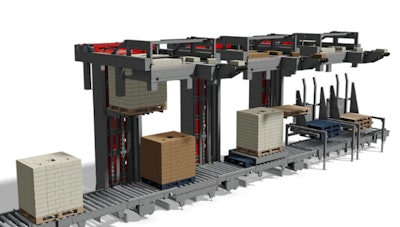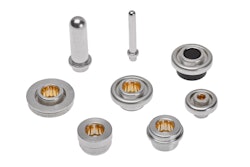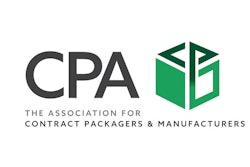To keep its machines competitive, Qimarox is responding to an increasing demand from the market to use the Pack ML packaging machine language. The company says that part of the reasoning is that almost all major consumer product manufacturers, including Nestlé, Procter & Gamble, and PepsiCo, state that PackML is a prerequisite for new production and packaging lines.
PackML stands for Packaging Machine Language, a guideline drawn up by the Organization for Machine Automation and Control (OMAC). This organization is supported by large, globally operating manufacturers of consumer products, such as aforementioned Nestlé, Procter & Gamble, and PepsiCo, amongst others. In collaboration with system integrators, machine builders, and technology suppliers, these brand owner CPGs want to create open standards for the vertical and horizontal machine integration. Horizontal integration refers to the interaction between the machines themselves (machine-to-machine communication), while vertical integration references linking these connected machines with a central control system.
According to the company, Qimarox’s alignment with PackML means that its palletizers, vertical conveyors, and other machines will now be even easier for its customers to integrate, operate, and maintain. Manufacturers of consumer products using PackML as a guideline succeed in bringing new production and/or packaging lines into use three to four months earlier than those that don’t adhere to the standard. These CPGs and food/bev manufactuers are seeing the total cost of ownership (TCO) of their systems fall significantly, while the overall equipment effectiveness (OEE) increases. System integrators and machine builders who incorporate Qimarox modules into their solutions also benefit from the simplified integration and acceleration of test procedures.
Conditions for innovation
Standardization in this realm allows manufacturers to shift gears quickly and adapt their production processes to the rapid changes in the market. OMAC is currently preparing to enable concepts such as plug-and-play and plug-and-produce in due course.
“PackML increases the possibilities for innovation. If manufacturers want to update a system, they don’t need to modify the control system of an entire packaging line. They only need to concentrate on the parts that need to be updated,” says Uwe Keiter, chairman of the OMAC Packaging Workgroup and Business Development Director/Consumer Goods at Lenze.
Standard languages like PackML also allow end users to take fuller advantage of new technologies, including the ubiquitous Internet of Things (IoT) or artificial intelligence (AI).
“Today, we can store and analyze data from different machines in the cloud. However, this is only really useful if we record the data identically, so that we can, for example, compare the performance of machines and calculate the OEE unequivocally. PackML makes that possible,” Keiter says.
Agreements in three areas
PackML allows apples-to-apples comparison in several areas that previously weren’t easily comparable. The first area concerns the status of the machine. If the status is ‘idle,’ then it is ready to produce. With a start button, the operator can then actually start the machine, after which the status will change to ‘execute.’ If there is a fault, the status will switch to ‘held.’ Thanks to the uniform set of states, operators can operate a new machine with minimal training and service engineers can quickly find out which part of the production or packaging line is experiencing any problems.
Another area that PackML works to standardize concerns the mode of operation of the machine. Is it set to ‘automatic,’ ‘manual,’ or ‘maintenance’? Finally, standardization exists in the way in which data is exchanged between both the machines themselves, and between the machines and the overlying control system. This could include, for example, the speed of the machine: will it be specified in meters per second or in units per hour? It has also been established that each machine will only exchange data with the machines immediately before and after it in the line.
“If machine B has a fault and the status jumps to ‘held,’ this is only passed on to machine A and C, but not to machine D. Machines A and C can respond to this by reducing their speed, which means that the status will change to ‘suspended.’ Machine C in turn passes this status on to machine D,” explains Keiter.
PackML as a prerequisite
The machine builders at Qimarox note that PackML is advantageous for its own, in-house operations as well—it’s not just a necessity to appease end users and system integrators. The OMAC guidelines make it easier for builders to design the control system of machines in a modular way. When upgrading, they only need to modify the module, as opposed to the entire machine. This reduces the time needed for testing and troubleshooting. In a factory acceptance test (FAT), there is no longer any need to test the communication with other machines, which can result in time savings of 60%. There is also no need to keep reinventing the wheel when programming the machine: 80% of the software can be reused.
But beyond the factors that simplify its own operations, Qimarox knows that by adhering to PackML, it is responding to market demand.
“More and more manufacturers of consumer products are including PackML as a precondition in their request for a quotation. By meeting PackML’s specifications as standard, we make it easier for our own customers—system integrators and machine builders—to meet these requirements,” says Jaco Hooijer, Operations Manager at Qimarox. “In addition, we recognize the importance of standardization in the industry. By becoming a member of OMAC we want to contribute to the further spread and adoption of PackML.”


























